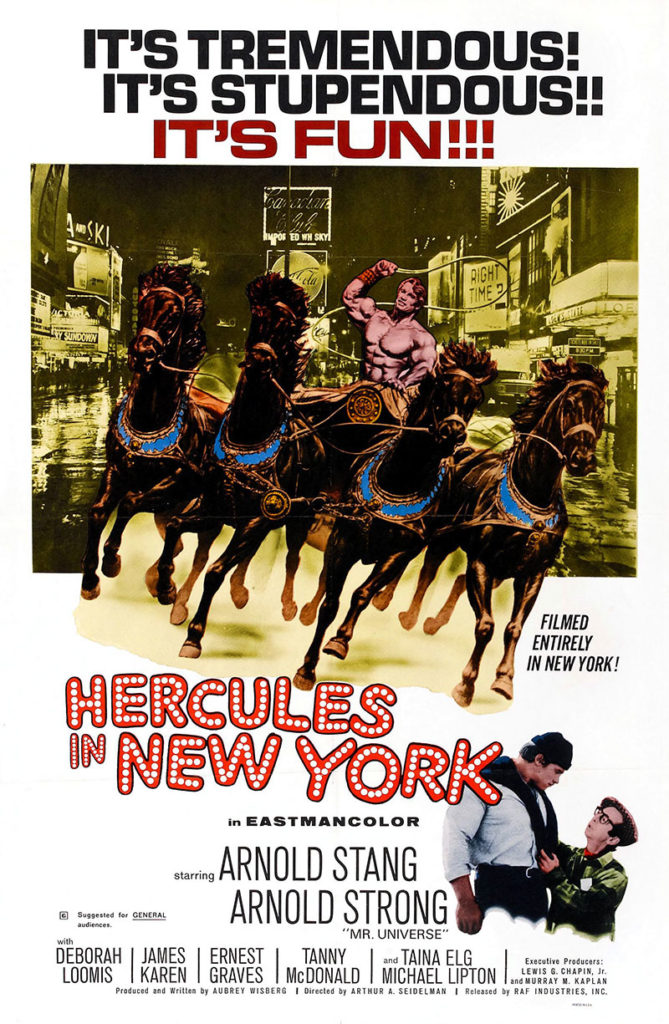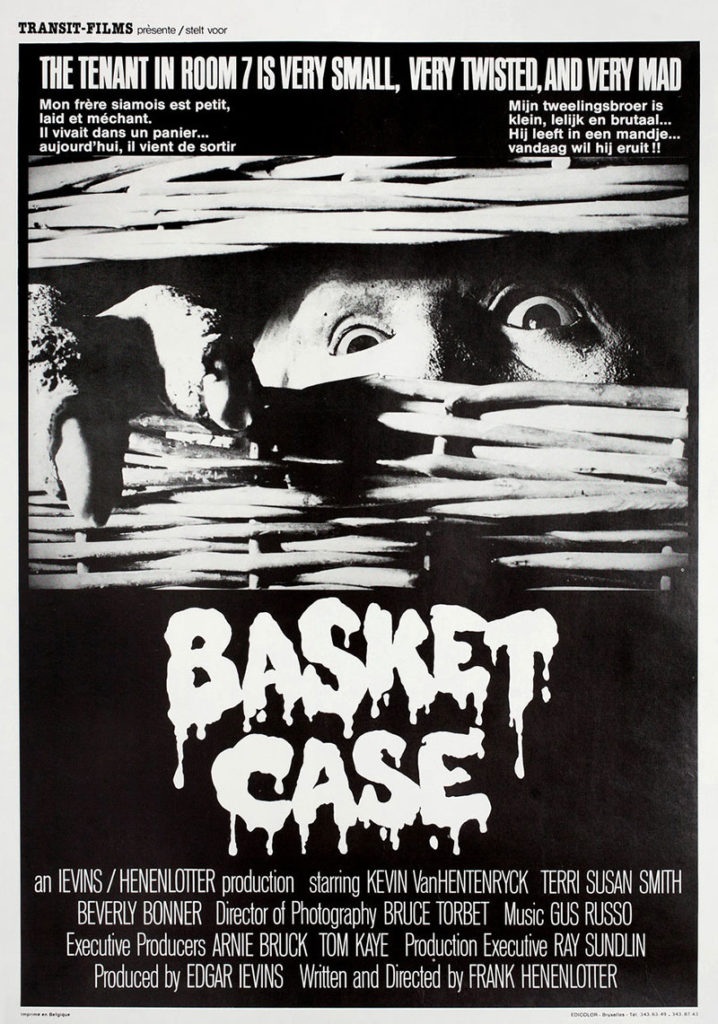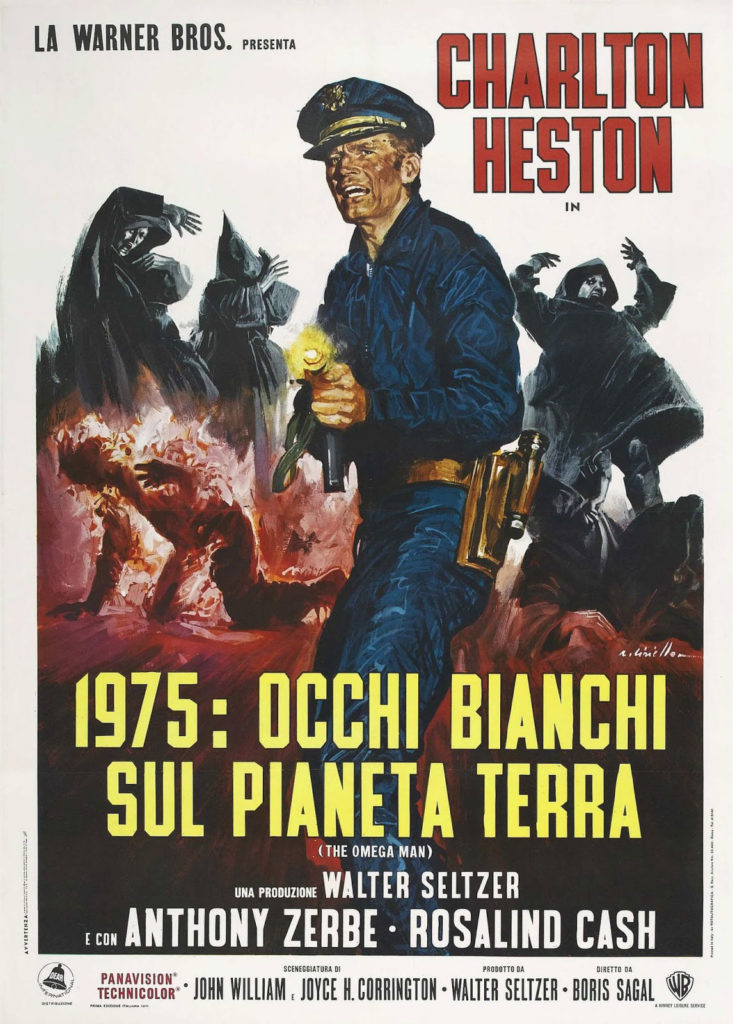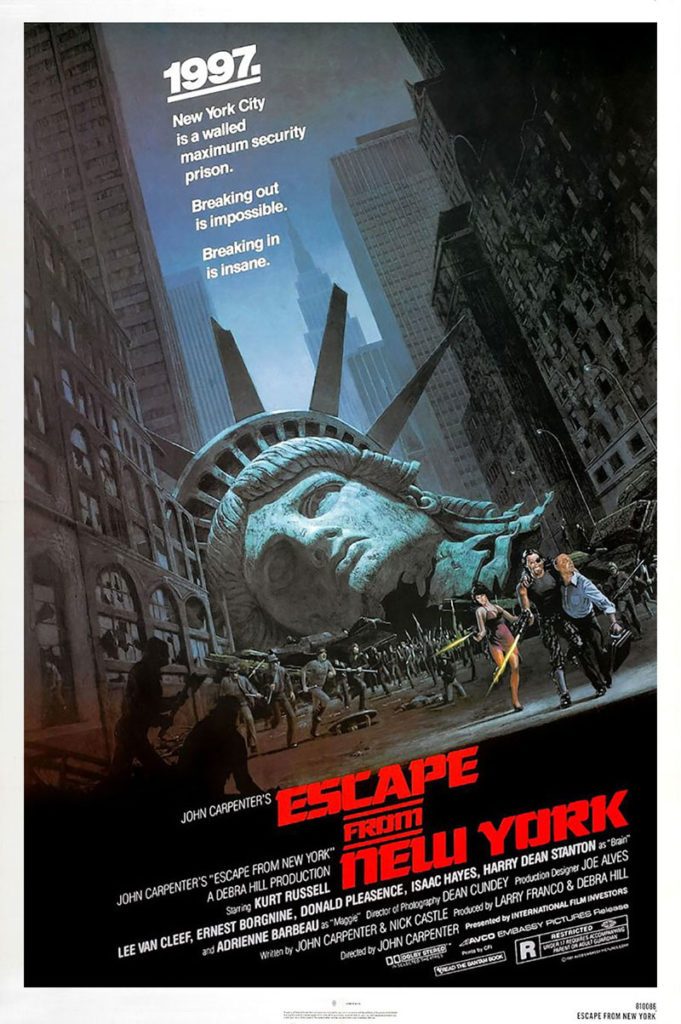 For no reason other than that I feel like it, I hereby declare this to be Arnold Schwarzenegger month at Missile Test. His Arnoldness has 54 acting credits to his name on IMDb. I’m going to watch a whole boatload of them and write some reviews. I’m looking forward to hours upon hours of explosions, gunfights, and rough accents. The first flick has only one of those, but it depends on which print a viewer manages to see.
For no reason other than that I feel like it, I hereby declare this to be Arnold Schwarzenegger month at Missile Test. His Arnoldness has 54 acting credits to his name on IMDb. I’m going to watch a whole boatload of them and write some reviews. I’m looking forward to hours upon hours of explosions, gunfights, and rough accents. The first flick has only one of those, but it depends on which print a viewer manages to see.
Hercules in New York marks the debut performance of Arnold Schwarzenegger. What a gloriously stupid movie. Having watched it, it’s amazing this man became one of the most famous actors of all time. Sure, everyone has humble origins, but I can’t think of a star’s early work being quite this humble. George Clooney had a role in Return of the Killer Tomatoes. Matthew McConaughey was once in a shitty Texas Chainsaw flick. Paul Rudd was in an awful Halloween movie. Hilary Swank, she of the double Oscar, was once kicking ass with Pat Morita as The Next Karate Kid. But one thing these three all had in common was that there was budding talent on display in their bad movies. This movie, in no way, makes it seem that Arnold is a decade or so from making a run as a big time movie star. Continue reading “Hercules in New York”

 This is one of the more bizarre movies I’ve ever seen. From writer/director Frank Henenlotter, Basket Case is an ultra low budget black comedy horror flick about a young man and his brother. By all accounts, Duane Bradley is a normal person. Raised in upstate New York, he’s on his first trip to the big city. He’s naïve — green as all hell, in fact — but he has his charms, and it’s easy to tell that the city can’t come close to extinguishing all his innocence.
This is one of the more bizarre movies I’ve ever seen. From writer/director Frank Henenlotter, Basket Case is an ultra low budget black comedy horror flick about a young man and his brother. By all accounts, Duane Bradley is a normal person. Raised in upstate New York, he’s on his first trip to the big city. He’s naïve — green as all hell, in fact — but he has his charms, and it’s easy to tell that the city can’t come close to extinguishing all his innocence. The three films adapted from Richard Matheson’s 1954 novel I Am Legend vary widely in scope, story, and distance from the original source material. They are all shaky and mostly forgettable, but The Omega Man maintains a special place in cinema as one of star Charlton Heston’s many 1970s forays into post-apocalyptic science fiction. For that, it is the most interesting of the three adaptations, if not the best, edging The Last Man on Earth by a close margin.
The three films adapted from Richard Matheson’s 1954 novel I Am Legend vary widely in scope, story, and distance from the original source material. They are all shaky and mostly forgettable, but The Omega Man maintains a special place in cinema as one of star Charlton Heston’s many 1970s forays into post-apocalyptic science fiction. For that, it is the most interesting of the three adaptations, if not the best, edging The Last Man on Earth by a close margin. Back before the great wave of gentrification began to hit American cities in the mid-1990s, there was the 1980s, an era when the distressed environment of the cities bottomed out. Long decades of neglect, strained local budgets, and rising crime left our cities veritable war zones. The inner cities were voids of hopelessness, abject poverty, and filth. Even affluent neighborhoods were just dangerous enough to breed well-heeled residents with canny street smarts, always looking over their shoulders for the dark figure hiding behind a tree or in an alley. This kind of palpable fear of urban environments is contagious, and it entered into our lore. We could envision no bright future for the American city because we had seen decay extend its grip for so long. Today’s cities have not fully recovered, and they remain always on the brink, ready to slide back as soon as people’s cares turn elsewhere, but it’s hard to picture just how bad things got unless one were a witness.
Back before the great wave of gentrification began to hit American cities in the mid-1990s, there was the 1980s, an era when the distressed environment of the cities bottomed out. Long decades of neglect, strained local budgets, and rising crime left our cities veritable war zones. The inner cities were voids of hopelessness, abject poverty, and filth. Even affluent neighborhoods were just dangerous enough to breed well-heeled residents with canny street smarts, always looking over their shoulders for the dark figure hiding behind a tree or in an alley. This kind of palpable fear of urban environments is contagious, and it entered into our lore. We could envision no bright future for the American city because we had seen decay extend its grip for so long. Today’s cities have not fully recovered, and they remain always on the brink, ready to slide back as soon as people’s cares turn elsewhere, but it’s hard to picture just how bad things got unless one were a witness.